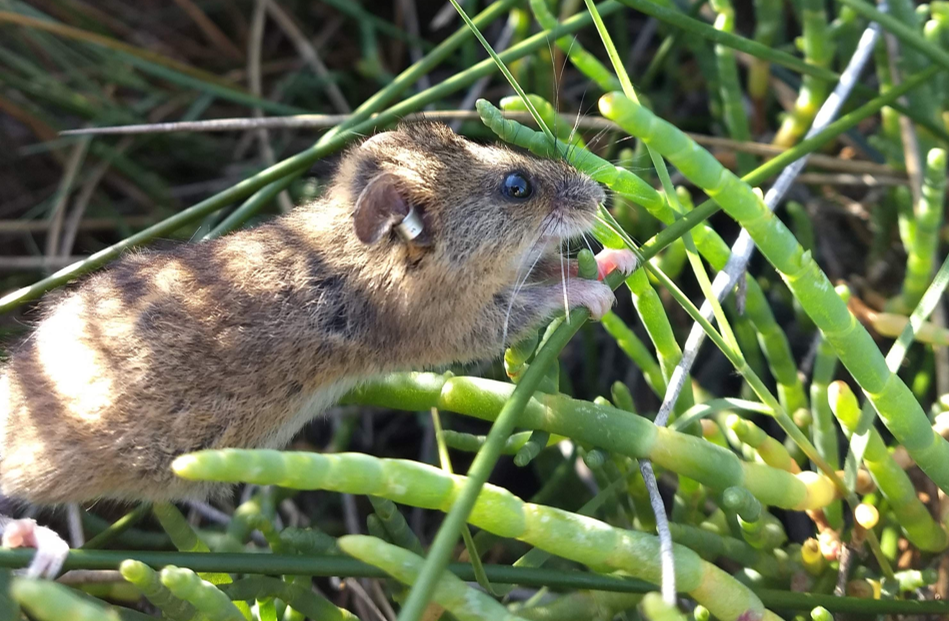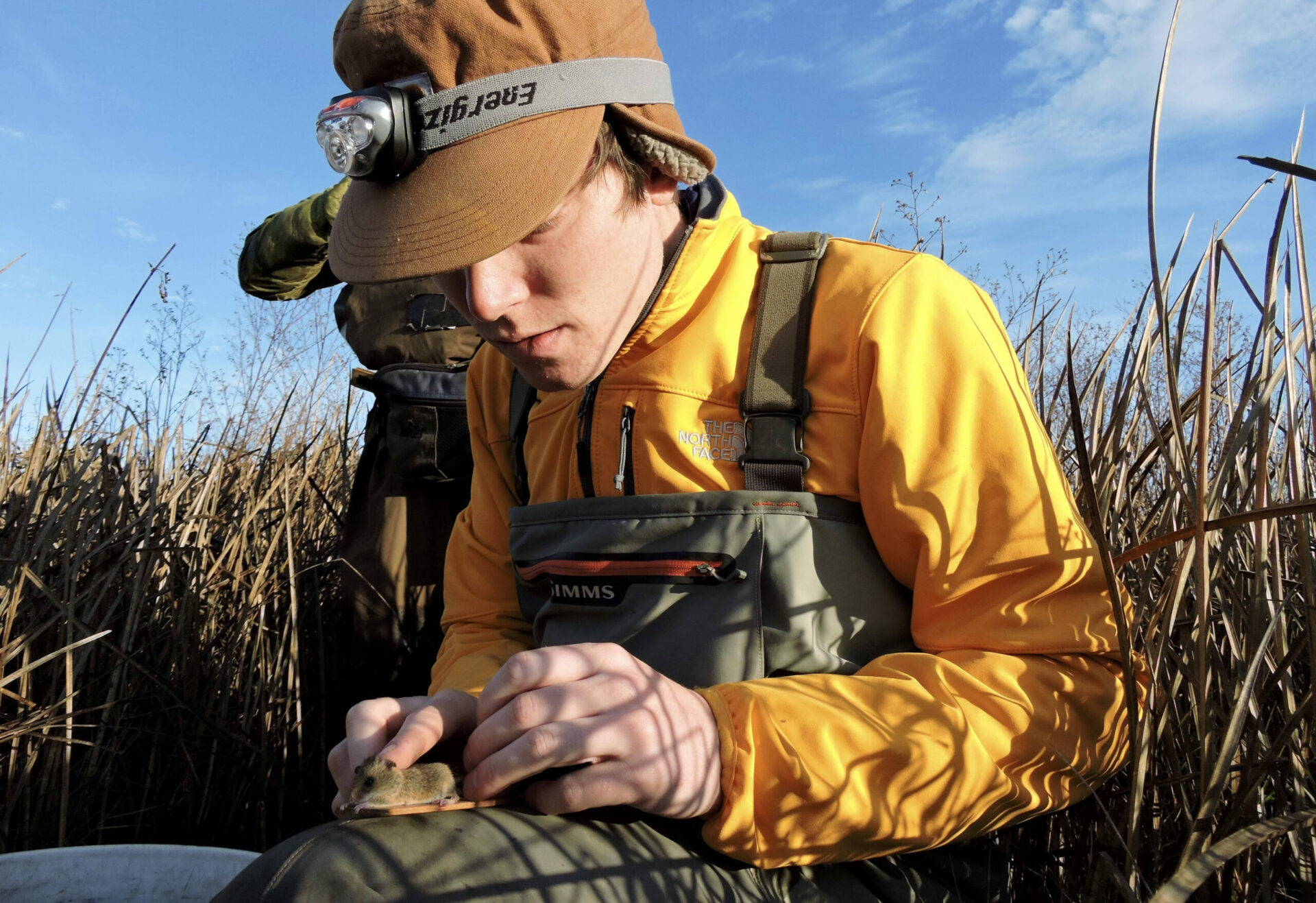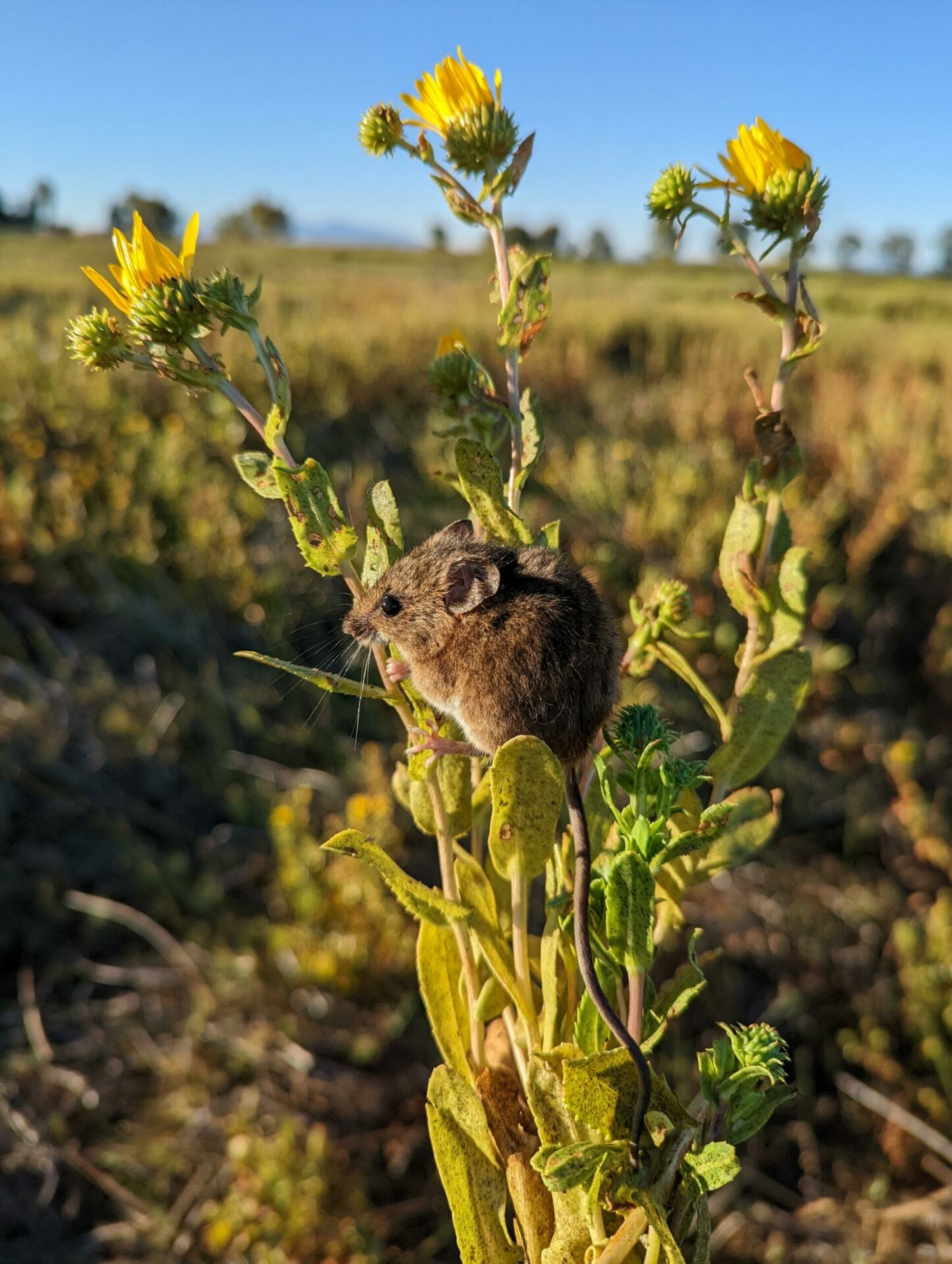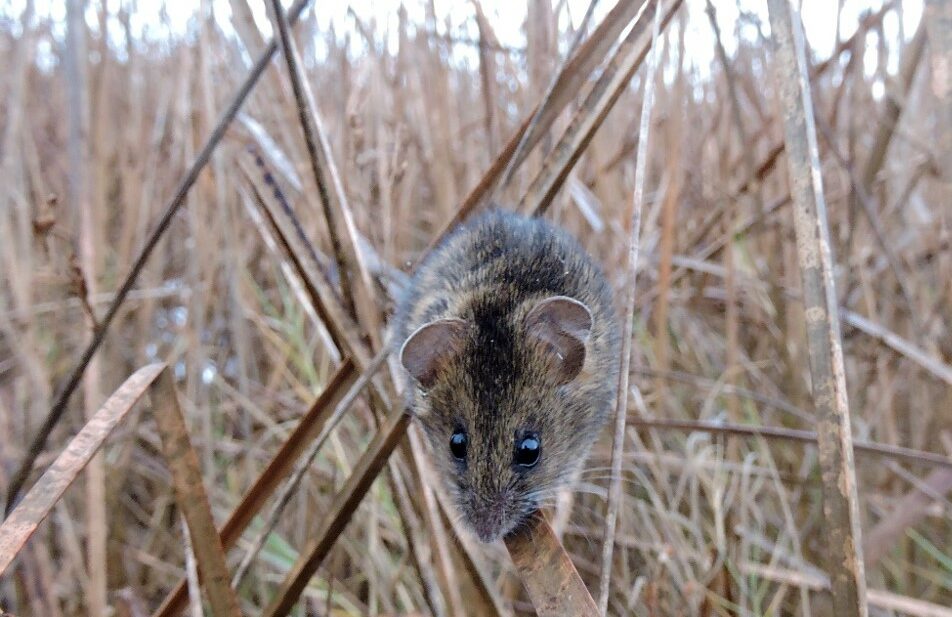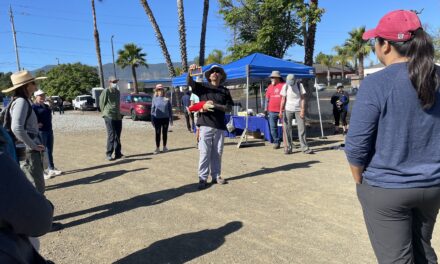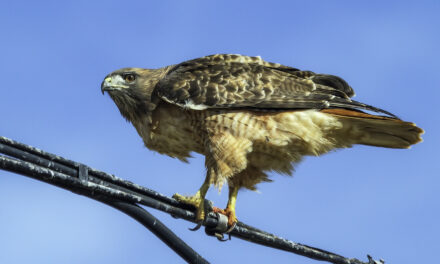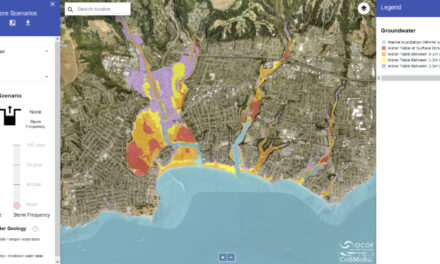Marsh Mice Come in Two Flavors
Endangered salt marsh harvest mouse climbing pickleweed. Photo: Cody Alyward
In the genes of a federally endangered mouse found only in the wetlands of the San Francisco Estuary, scientists have uncovered evidence of the waterway’s ancient expansions and contractions. Populations of the salt marsh harvest mouse have boomed and shrunk in synchrony with the reach of San Francisco Estuary’s tides, according to new research published in the journal Conservation Genetics.
The study, led by Cody Aylward and Mark Statham of the Mammalian Ecology and Conservation Unit at UC Davis, was spurred by a need to better characterize distinct populations within the species.
Researcher Cody Aylward in the field. Photo: UC Davis
For more than a century, scientists have asserted that the salt marsh harvest mouse (Reithrodontomys raviventris) comes in two flavors. Mice from the North Bay tend to have longer tails and pale belly fur, while those from the South Bay have shorter tails and reddish tummies.
“If we ever had to consider restocking or bolstering numbers of animals in any of these marshes, we would prefer to be able to take animals that are within the same subspecies,” Statham says.
The geographic dividing line between the two subspecies, however, was as muddy as the mouse’s environs. Mice from San Rafael, Corte Madera, Richmond, and Oakland wetlands resembled the southern subspecies, but some lived adjacent to populations with northern characteristics. This puzzled scientists.
“The Golden Gate seems like it would be this intuitive barrier to gene flow from the north and south. It didn’t make sense that populations north [of the Golden Gate] would belong to the southern subspecies,” says lead author Aylward, now with the World Wildlife Fund.
Seeking answers, the scientists analyzed whole mitochondrial genomes from 102 mice from across the range of the species. Most had been captured within the past 15 years. But for several Central Bay populations that are now extinct — those from Oakland and Marin — the scientists filled the gaps with museum specimens collected between 1930 and 1959.
Other Recent Posts
Boxes of Mud Could Tell a Hopeful Sediment Story
Scientists are testing whether dredged sediment placed in nearby shallows can help our wetlands keep pace with rising seas. Tiny tracers may reveal the answer.
“I Invite Everyone To Be a Scientist”
Plant tissue culture can help endangered species adapt to climate change. Amateur plant biologist Jasmine Neal’s community lab could make this tech more accessible.
How To Explain Extreme Weather Without the Fear Factor
Fear-based messaging about extreme weather can backfire. Here are some simple metaphors to explain climate change.
Live Near a Tiny Library? Join Our Citizen Marketing Campaign
KneeDeep asks readers to place paper zines in tiny street libraries to help us reach new folks.
Join KneeDeep Times for Lightning Talks with 8 Local Reporters at SF Climate Week
Lightning Talks with 8 Reporters for SF Climate Week
ReaderBoard
Once a month we share reader announcements: jobs, events, reports, and more.
Staying Wise About Fire – 5 Years Post-CZU
As insurance companies pull out and wildfire seasons intensify, Santa Cruz County residents navigate the complexities of staying fire-ready.
Artist Christa Grenawalt Paints with Rain
Snippet of insight from the artist about her work.
High-Concept Plans for a High-Risk Shoreline
OneShoreline’s effort to shield the Millbrae-Burlingame shoreline from flooding has to balance cost, habitat, and airport safety.
In a Climate Disaster, Your Car Won’t Save You
Fleeing wildfires without a car might seem scary, but so is being trapped in evacuation gridlock — and the hellscape of car-dependency.
“What we found genetically is that north of the Golden Gate is the northern subspecies and south of the Golden Gate is the southern subspecies,” Aylward says — a finding which goes against current scientific understanding.
The data also enabled the researchers to track shifts in mouse demographics. “You can look backwards in time and see when the population was growing and when it was declining,” Aylward says.
The timing of those population shifts correlated beautifully with changes in the extent of the San Francisco Estuary, the researchers report. At the peak of the ice ages, the shoreline was west of today’s Farallon Islands. San Francisco Bay didn’t exist back then, and tidal marsh acreage was much smaller. Once the glaciers began to melt some 10,000 years ago, seawater began pouring through the Golden Gate to form the modern estuary. The marshes grew by leaps and bounds, enabling the mouse population to skyrocket apace.
The continued rise in water levels helps explain why some Central Bay mice look so different from their northern subspecies relatives. Mice in Marin and Corte Madera were likely cut off from adjacent populations as marshes were submerged and walled off by steep headlands.
Mouse climbing Grindelia. Photo: Cody Alyward
Mouse climbing Grindelia. Photo: Cody Alyward
The demographic data also revealed that the genetic diversity of “salties” (as they are fondly called by insiders) took a nosedive within the past few hundred years. This coincides with the 150-year period of diking, draining, and development that has decimated all but 10% of the San Francisco Estuary’s original tidal marshes.
“Our analysis confirmed that a lot of that genetic diversity loss is probably on us,” Statham says. “We [see] signs of how sea level rise has affected the evolutionary history of this species from way back all the way through to within our lifetime.”
For the mice of the urbanized central San Francisco Bay, climate change poses an existential threat. Roads and buildings now wall off marshes that can no longer relocate to higher ground. But the saga of the salties is far from over, Aylward says.
“As sea level rises, and less snowmelt comes out of the Sierra, the salinity gradient could move [upstream] into the Delta,” with tidal marsh not far behind. “That would be a natural opportunity for the mice to repeat their ancient pattern of expansion.”
More
- Surveying Salties to Save Them, Estuary News, October 2022
- Not so Picky Marsh Mouse, Estuary News, December 2019






